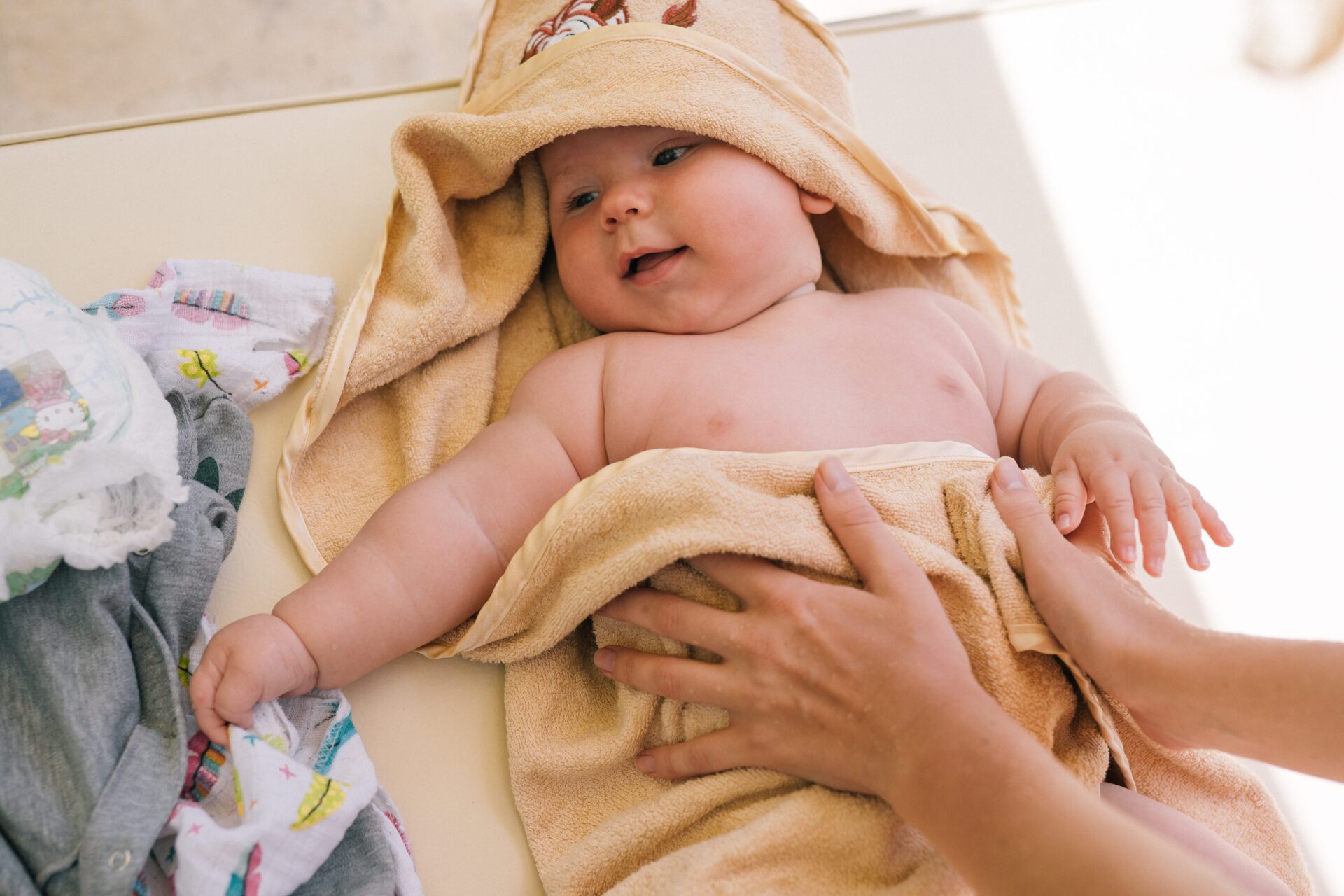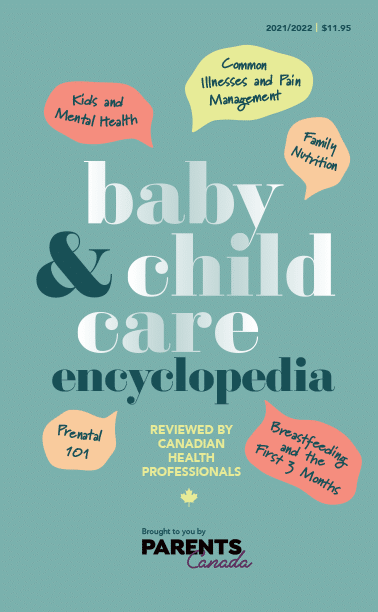Baby
5 min Read
Newborn Care How-To’s

October 29, 2021
Baby
5 min Read

October 29, 2021

From the pages of the Baby & Child Care Encyclopedia: Chapter 2, Breastfeeding and the First Three Months
Many first-time parents haven’t had experience around infants, but they learn quickly by following some of these techniques.
Holding a Newborn It’s pretty obvious but you’ll want to ensure your hands are clean before picking up the baby. (Their immune systems are still developing, so using soap and water or hand sanitizer is a good idea.) Keep his or her head and neck supported and find a comfortable position—you’ll no doubt master cradle hold and shoulder hold within the first few days. Remember to always be gentle—it’s important not to shake the baby.
Comforting and Calming The physical closeness you have with your newborn will foster your emotional connection—that’s one reason why healthcare providers suggest skin-to-skin contact just after birth. If you choose to breastfeed you’ll be spending lots of time fostering physical closeness, but nursing isn’t the only way to bond with or soothe a baby. You and your partner can continue to practise skin-to-skin at home while feeding, bathing or cuddling. Little ones also respond well to singing, cooing and talking in calm voices, and they love being rocked. Infant massage is also a popular way to calm and soothe, plus experts say it can help with growth and development. (There are plenty of howto videos online.)
Swaddling Remember the nurse in the hospital handing you your perfectly packaged baby wrapped tightly in a blanket? It turns out babies love feeling like burritos—it keeps them warm, relaxed and feeling secure. Swaddling is an art and, thankfully, it’s easy to learn. (There are lots of videos on proper swaddling online.) Just make sure not to overheat Baby, restrict leg movement or have the swaddle blanket above the chin.
Burping This one takes some practice. Most experts suggest burping babies often—the air that they swallow while eating can make them gassy and, yes, fussy. If you’re breastfeeding, burp when you switch breasts; if you’re bottle-feeding, burp every two or three ounces. There are a few ways to get the job done, but the one most parents seem to favour is done like this: Sit Baby on your lap. Support his or her head using one hand to cradle Baby’s chin (in the palm of your hand—ensure you’re cradling the chin and not the throat) and let the heel of your hand rest on his or her chest. Gently pat his or her back using your other hand. If you don’t get a burp after a few minutes, try a different position (like over the shoulder) and keep Baby upright.
Diapering Don’t worry if you’ve never diapered a baby—you’re about to become a pro. Whether you choose cloth or disposable, prepare for the onslaught of poop-filled diapers; you’ll be changing dirty diapers about 10 times a day for the next while. Ensure everything you need is within reach—consider using a diaper caddy that you can easily move from room to room. When your baby’s diaper is wet or soiled, lay him or her down on the back and take off the diaper. Gently clean the tummy and genital area with wipes or a washcloth (girls should be wiped front to back), then apply diaper ointment, petroleum jelly or barrier cream. Diapers should fit snugly around Baby’s tummy, but not too tight. Don’t forget to wash your hands before and after.
Bathing Babies don’t need daily baths. In fact, most experts say it’s better for their skin to be bathed two or three times a week. Sponge baths are preferred for the first month (so the umbilical cord stump falls off and the belly button area heals). Using warm water, a soft washcloth and unscented baby soap, gently clean Baby’s eyes, nose, ears and face. When cleaning the rest of the body, make sure to wipe in and around those super-cute creases around the neck and don’t forget to gently wash Baby’s head. It goes without saying but bears repeating: Never leave your kiddo alone in the sink or tub.
Cord Care Right after Baby is born, the umbilical cord is white, soft and like jelly. It quickly becomes dry, hard and black, and will fall off in a week or two. You can clean the area with cotton swabs and water. Continue until the cord is dry and healed. If the cord has an odour, yellow discharge or redness on the nearby skin, let your paediatrician know as it might be infected.
